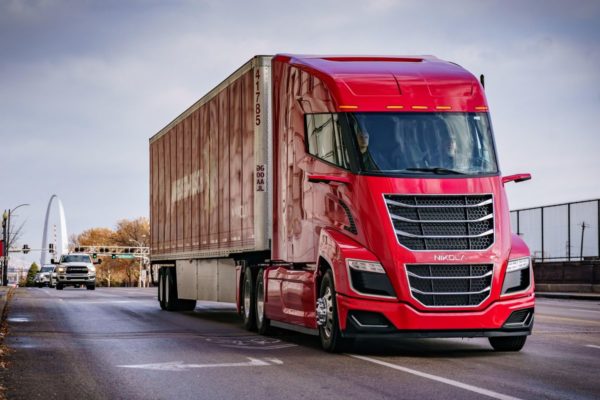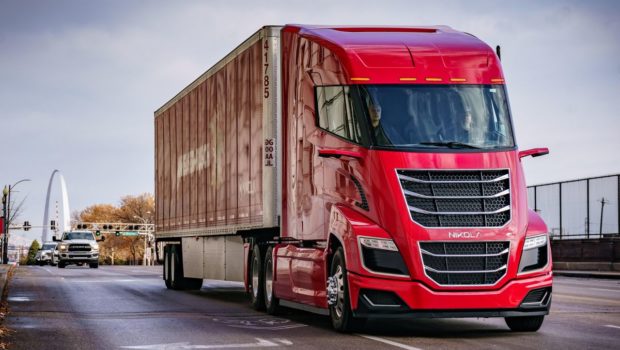How Commercial Truck Industries Are Affected by the Pandemic
With the advent of the COVID-19 pandemic, industries all over the world have been impacted, including the transportation industry. While the extent of this disruption remains to be seen, the unique nature of the crisis means that there are several opportunities for logistics and supply chain industries to reposition themselves against their competition.
Understanding the crisis, especially in terms of the challenges associated with commercial transformation can help companies start planning for the future and safeguard their business interests. This involves addressing some of the financial impacts that truckers face as a result of the pandemic, including the ever-present issue of truck driver shortages.
In particular, smaller fleets are hardest hit by the negative impacts of the pandemic, along with the impact of declining trade on a global level. However, its events have also led to an increase in driver pay, a greater emphasis on sanitation and health, and rising commercial transportation insurance costs that address issues related to risk management.

Increased Vulnerability of Small Carriers
Although freight rates initially surged in March 2020 due to fears of the virus, many highway truck stops closed down to discourage truck drivers from making long journeys. In addition, port traffic decreased and factories shut down. Because of this, many smaller carriers suffered and have failed to recover due to the pandemic.
Analysts predict that unlike larger fleets, smaller fleets might be unable to stay afloat during the crisis and end up having to let go of skilled drivers. This can lead to a longer-term shortage of truckers. Potentially, this can be a major issue as 97% of trucking companies in the U.S. operate under than 20 trucks, according to the American Trucking Associations.
Small carriers involved in the oil and gas industry in 2020 were especially vulnerable during this period, due to the decrease in sales that lead several companies to file for bankruptcy protection. As a result, many small-business truckers experienced unpaid freight bills and fears of bankruptcy as well.
Impact of Declining Trade and Local Spending
Across the globe, the impact of the crisis will be felt due to a decline in the short-term trade volume of expensive goods like automobiles, which is expected to decline by more than 50% due to factory shutdowns. However, the price of basic consumer staples such as cereals will only decline by around 5%.
In the trucking industry, it is forecasted that truckload trucking will see a decline of 0.6% compared to previous levels that went up due to inventory rebuilding and e-commerce. However, it will also be limited by poor workforce growth, despite the high rates of unemployment in the current economy.
As stimulus program payments in the United States have lessened, however, the level of spending on goods is also lessening, along with another potential outbreak of the virus. In 2021, there might be weaker freight tonnage overall due to reduced consumer spending on goods as compared to essential services.
Depending on how increased e-commerce expenditure balances out reduced spending on other sectors, it remains to be seen how the economic conditions of commercial truck industries will fare in 2021.
Positive Increase in Driver Pay
On the positive side of things, truck drivers in the United States have seen an increased surge of pay increases in the second half of 2020 that may continue throughout 2021. Indicators show that drivers are prioritizing higher pay and compensation for their roles, due to the steep competition between fleets.
According to Priscilla Peters, vice president of marketing and training at Conversion Interactive Agency, “Drivers are not only interested in seeing improvements in their base or per-mile pay, but they are also looking for carriers who are increasing ancillary pay for detention, tarp pay, fuel incentives and more.”
A representative from DHL also expects this trend to continue in 2021, noting the difficulty in finding and retaining talent to compensate for the surge in business as the country partially started to reopen businesses. With the end-of-year truck sales in 2020 finishing on a positive note, some analysts hope that freight volume will continue to remain steady.
Emphasis on Sanitation and Social Distancing
In order to prevent the spread of the virus, many fleet companies are placing an increased emphasis on sanitation and social distancing to protect the health of their employees. With truck drivers being on the front lines to deliver essential goods and supplies, their risk of contracting the virus is rather high.
Many drivers continue to wear personal protective equipment, such as shields, masks, gloves, and hand sanitizer. However, with the sudden onset of the virus, many drivers were unable to obtain the supplies they needed and had to make do with makeshift options. More recently, these supplies are more accessible for the majority of drivers.
Some measures that fleet companies have instituted include creating a checklist for drivers and technicians to follow, especially for high-touch areas. Shifting to electronic paperwork or placing them on tables to comply with social distancing is also a safer way to conduct transactions.
Adjustments to Onboarding and Driver Retention
During the pandemic, some segments of the commercial truck industry had to furlough their drivers while others hired those who were furloughed in order to obtain experienced drivers with minimal onboarding.
In addition to this, many fleets had improved levels of driver retention, which is typical in an uncertain job market. Many companies communicated proactively with their employees to assure them of their safety, creating campaigns with special COVID hotlines and websites with key information.
The number of years of experience that a truck driver has had is positively correlated with safety, especially for those with less than five years of experience. Entry-level drivers with less than one year of experience need additional training and a lengthier onboarding process.
However, many fleets have had to alter their hiring processes to adhere to social distancing rules and regulations. Remote interviews, orientations in larger spaces, and conference calls are the new normal for many trucking companies in the months to come.
Rising Commercial Trucking Insurance Costs
Although reduced numbers of vehicles on the road have led to fewer trucking accidents during the pandemic, the cost of trucking insurance plans is still on the rise. In recent years, insurance premiums have been rising due to a number of non-pandemic related reasons.
This includes the rise of nuclear verdicts, where plaintiffs’ attorneys aim to manipulate the jury in the event of an accident. With potential payouts of $10 million or higher awarded in some cases, many attorneys are investigating ways in which negligence or poor practices might allegedly lead to a trucking accident.
In addition, rising premiums mean that trucking companies might have to settle for less coverage at a higher cost, making it difficult to abide by state rules and regulations. For motor carriers who are concerned about this development, managing areas of risk such as driver health during the pandemic can help lower insurance costs and reduce claims.
Improvements in Safety Technology for Trucks
As technology grows more advanced, it’s becoming more affordable for commercial truck companies to install telematics technology and other onboard safety technology to assist drivers during their journeys. This can also help reduce overall business costs by promoting fuel efficiency and preventing costly accidents.
For instance, camera technology can act as a means of support during driver training and correct any poor habits such as sleeping on the job or distracted driving. Built-in alert systems can also remind long-haul truckers when it’s time to take a break and pull over for a rest stop.
Furthermore, during a truck accident where the driver is alleged to be at fault, having a camera installed can provide key video evidence that can prove the trucker’s innocence. This can help reduce claims expenses and keep insurance costs down.
Other forms of technology such as dynamic routing can lower fuel costs and help drivers identify the speediest routes to their given destination. Collision mitigation systems are likely to continue playing a key role, in addition to electronic logbooks that can make it easier for truckers to log hours.
In a post-COVID climate, investing in safety technology for commercial trucks can reduce costs in the long-run, even though there may be an initial adjustment period in terms of installment and training within fleets.
Modern Training and Recruitment for Truck Drivers
With a shift to remote work for many trucking companies, investing in other forms of modern training and recruitment can help attract truck drivers and maintain the longevity of the trucking industry. In the face of the looming driver shortage, finding new ways to recruit and onboard truckers is the key to long-term success.
Transportation companies that promote self-learning programs that take place online can stay one step ahead of the curve as they recruit employees. Digital content that integrates gamification can motivate applicants to consume and retain information much faster, and target a younger generation in addition to the existing truck drier base.
With the unpredictable impacts of the pandemic, prioritizing driver safety and ensuring employee satisfaction through adequate pay are some of the ways that commercial truck owners can boost their revenue in the coming years.
If you have further insights on how the commercial trucking world might continue to feel the effects of the global pandemic, please feel free to leave a comment below!
















